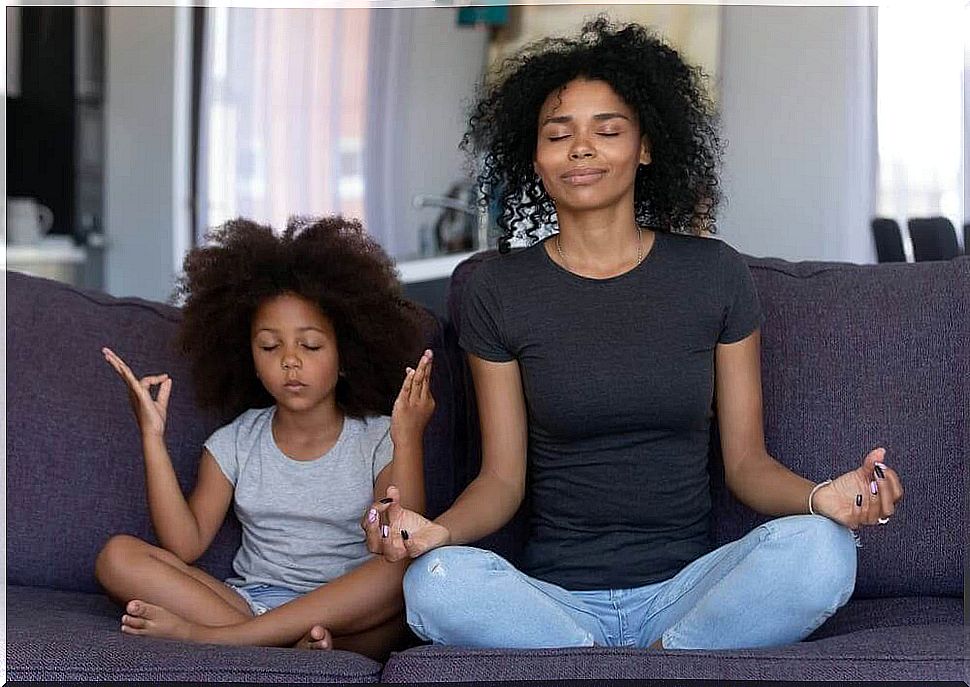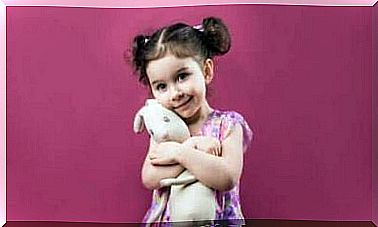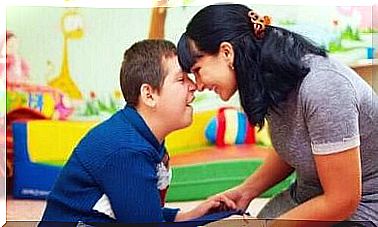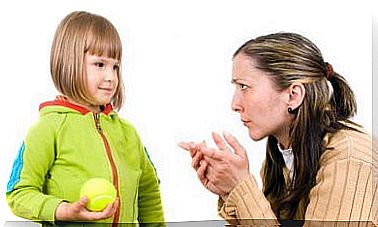Mindfulness And Meditation For The Whole Family

Can mindfulness and family meditation add a little more Zen into your daily life? Mindfulness and meditation are known to reduce anxiety, increase empathy and promote happiness and well-being in people of all ages and cultures.
Meditating with children can seem like a stressful activity. But this simple and old practice can take many forms. It can be a good activity for children.
Start with these fun and easy exercises to introduce your children to inner peace. At the same time, you help the whole family to feel that they can control even the most stressful situations from within.
Breathe as a family: Mindfulness and meditation
Breathing is one of the biological reflexes we take for granted. Of course we do it right, right? Unfortunately, this is not always the case. However, learning to take deep, cleansing breaths is an easy, immediate way to give us a few moments of calm concentration.
Let your children hold their hands to their stomachs while closing their eyes. Encourage them to take a deep breath through their noses and slowly count to five. Make them hold their breath for two seconds. Then count backwards when they exhale completely. Ask them to notice how the chest rises and falls as it fills the lungs with air and then releases it.
If you think this activity will be a little too quiet and peaceful for your children, then whisper animal sounds as they exhale. For example, the buzzing of a bee or the roaring of a cow. This quiet mindfulness and meditation activity is perfect for when you are waiting in a waiting room and other times when it is good to stay calm and quiet.
Listen carefully now!
Full attention is about adjusting to what is happening here and now and accepting it without judging or connecting. Children are constantly in motion, physically and mentally. Back and forth between what happened at the end of the last activity and what the next activity will be. They are still developing their ability to focus their thoughts and appreciate what is here and now.
Challenge your children to a game and ask them to sit cross-legged and close their eyes. Ask them to listen carefully when playing a sound. Ring a bell, strike a triangle or play a musical chord. Ask them to raise their hand when they no longer hear a sound.
Patience and listening focused are important skills. With this activity, your children learn to listen and be patient, something that is important for both their personal and professional lives in the future.
Meditation and mindfulness before children fall asleep
Things are often a bit chaotic at bedtime, and this makes it difficult to meditate in the evening. However, it is also perfect if you can integrate it into your routine. A guided meditation, performed while lying down while the body is relaxed, is a good idea for the whole family. The purpose is to calm the mind with the help of relaxing instructions you can listen to.
For example, you could ask your children to imagine that they are a tree and to visualize their roots and branches, leaves or flowers. They can see the field or forest where it grows and how it came about that they started growing right there. Ask them to feel the sun’s warming rays and how the earth feels beneath them.
Speak slowly and add long, exaggerated breaths in the middle of breaks – it’s basically the most relaxing story at bedtime! You can search YouTube for “child meditation for sleep” to find a relaxing video or ideas for your own guided meditation routine before the children go to bed.

Meditation on the go
Children love to move. The tranquility factor can be a challenge when trying to meditate with children. Yoga, which is like meditation in motion, helps to develop physical and mental strength and flexibility by teaching patience, concentration, breathing and endurance.
Make it a family activity by looking for yoga classes for children with a healthy role model and at the same time creating memories together as a family.
Meditation is not just for monks on a mountaintop. It is a fun and accessible activity that everyone can practice, anywhere and anytime. Introducing children to this relaxing concept in their early years can provide lifelong benefits and a domino effect.
So what is the most important thing to remember when trying to teach your children about mindfulness? To let go! The more you use meditation and mindfulness, the greater the benefits you will see in all aspects of life. Meditation and mindfulness can teach your children how to enjoy life and the challenges it presents to us.









